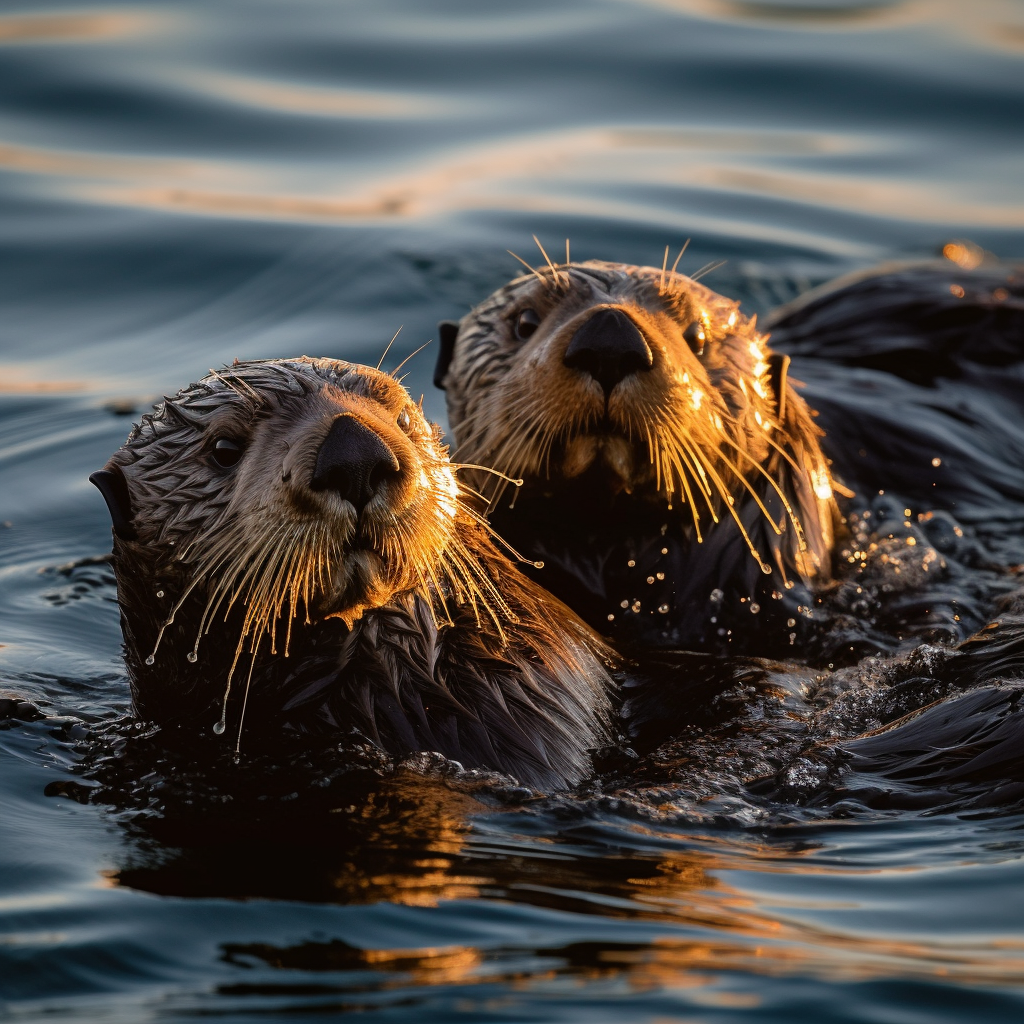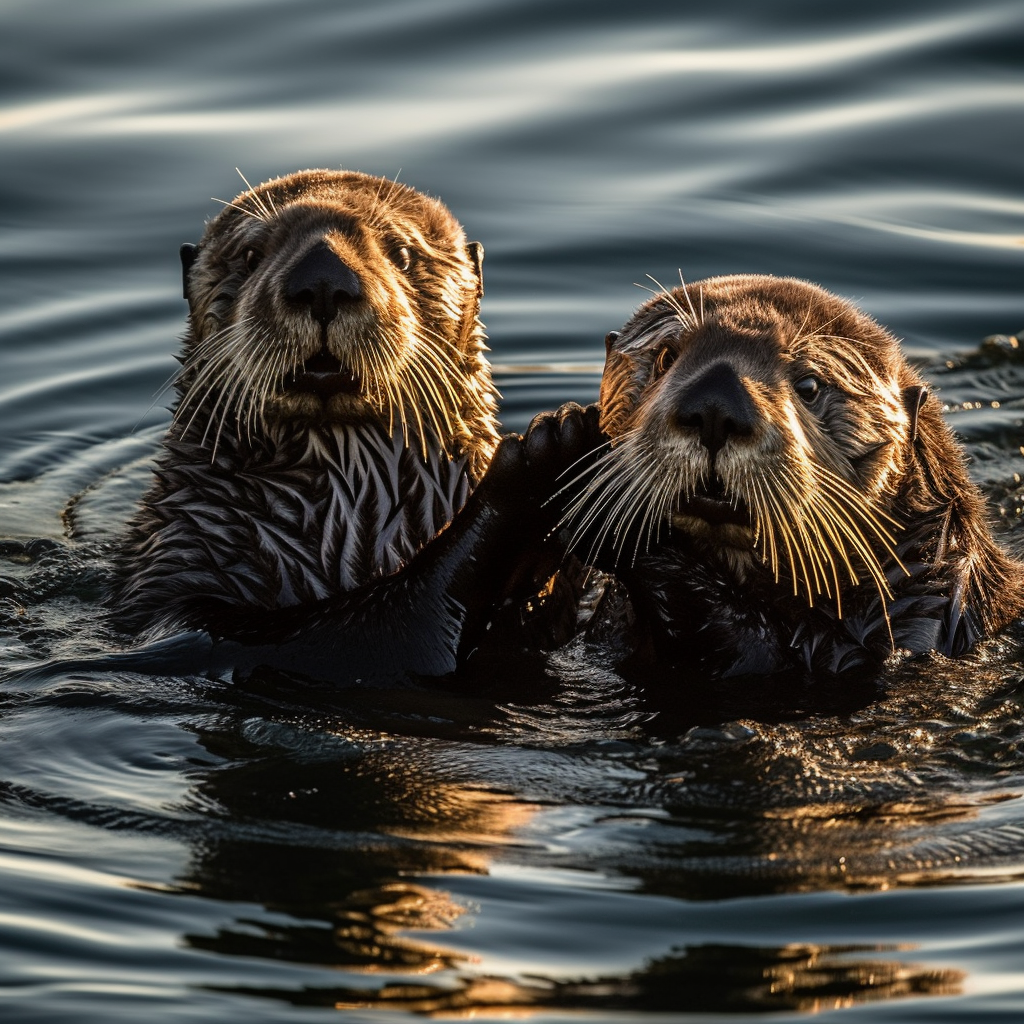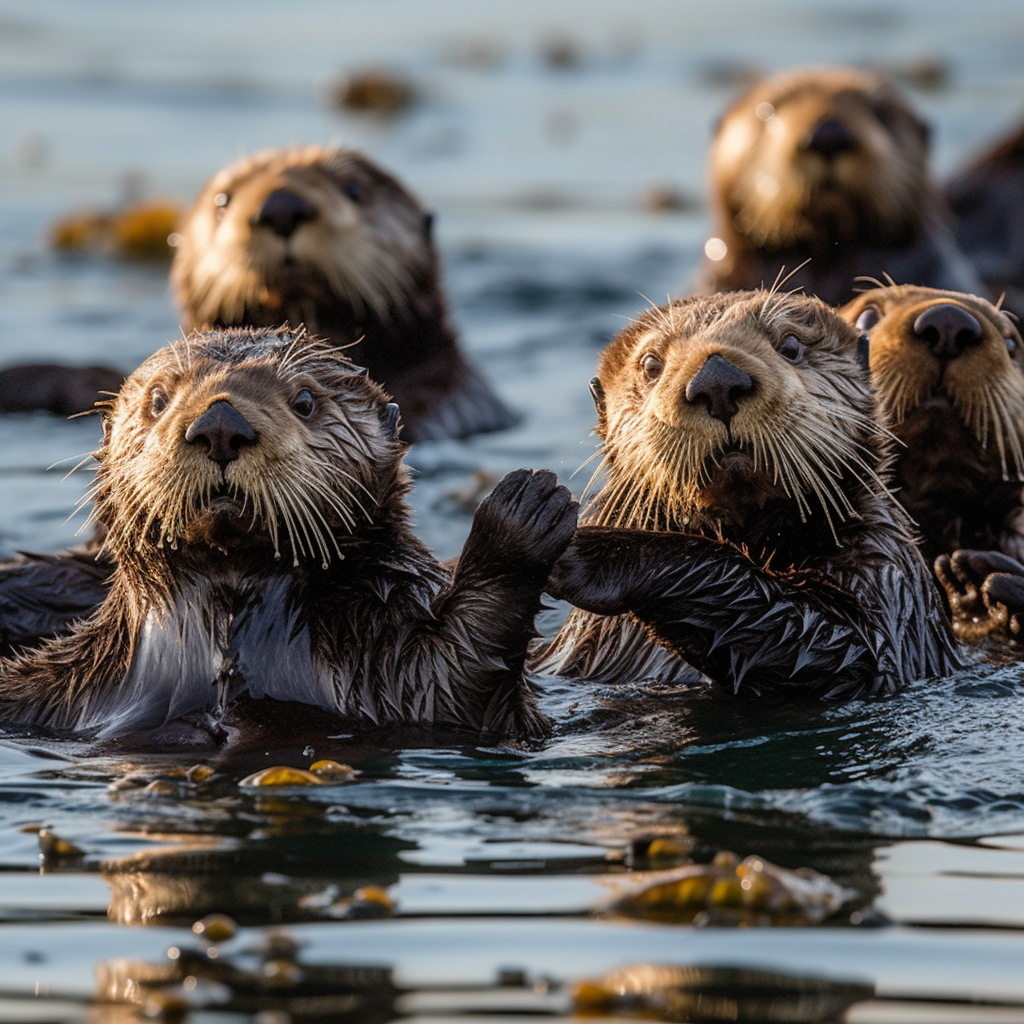Sea otters are fascinating marine mammals known for their playful behavior and impressive hunting skills. These adorable creatures are often found in coastal waters, where they feed on a variety of marine organisms. One question that frequently arises is whether sea otters eat octopus. In this article, we will explore the dietary habits of sea otters and delve into the intriguing relationship between these charismatic animals and the elusive octopus. So, let’s dive in and discover if sea otters have a taste for octopus!
Key Takeaways
- Sea otters are known to eat octopus as part of their diet.
- They have a unique hunting technique to catch and consume octopus.
- Octopus is a valuable food source for sea otters, providing them with essential nutrients.
- The interaction between sea otters and octopus plays a crucial role in maintaining the balance of marine ecosystems.
The Diet of Sea Otters: An Overview

Sea otters are fascinating creatures that inhabit the coastal waters of the northern and eastern Pacific Ocean. These adorable marine mammals have a diverse diet that consists of various marine organisms. In this section, we will delve into the eating habits of sea otters and explore their preferences when it comes to food.
A. What Do Otters Eat in the Ocean?
Sea otters are known to be opportunistic feeders, meaning they take advantage of the food sources available to them in their environment. Their diet primarily consists of marine invertebrates, such as crabs, clams, sea urchins, and mussels. These creatures provide a rich source of nutrients for the otters.
One of the most interesting aspects of sea otter feeding behavior is their ability to use tools. They often use rocks or other hard objects to crack open the shells of their prey. This tool usage is a unique behavior observed in only a few other animal species.
B. The Predilection for Fish: Why Do Otters Eat Fish?
While sea otters primarily feed on marine invertebrates, they also have a predilection for fish. Fish make up a significant portion of their diet, especially in areas where fish populations are abundant. Otters are skilled hunters and use their agility and dexterity to catch fish underwater.
Fish provide sea otters with a high protein content, which is essential for their growth and overall health. Additionally, fish are a readily available food source that allows otters to meet their energy requirements efficiently.
C. The Diversity of Sea Otter’s Menu: Do Otters Eat Starfish?
Sea otters have a diverse menu that extends beyond invertebrates and fish. They are known to consume a variety of other marine organisms, including sea stars, also known as starfish. However, their consumption of starfish is not as straightforward as it may seem.
Sea otters primarily target specific species of sea stars, such as the purple sea star. These particular species can have a detrimental impact on kelp forests when their populations become too large. By feeding on these sea stars, otters help maintain a healthy balance in the marine ecosystem.
It is worth noting that not all species of sea stars are part of the otter’s diet. Some species have developed defense mechanisms, such as spines or toxins, which make them less desirable or even toxic for consumption.
In conclusion, sea otters have a diverse diet that includes marine invertebrates, fish, and even certain species of sea stars. Their ability to adapt to different food sources allows them to thrive in their marine habitat. By consuming a variety of organisms, sea otters play a crucial role in maintaining the balance of the marine ecosystem they inhabit.
The Fascinating Case of Sea Otters and Octopus

Sea otters and octopuses are two fascinating creatures that inhabit the marine ecosystem. Their interactions in the wild have intrigued scientists and nature enthusiasts alike. In this section, we will delve into the relationship between sea otters and octopuses, exploring whether sea otters eat octopuses and the unique hunting techniques they employ. We will also discuss the challenges and risks faced by both the predator and the prey in this dynamic relationship.
A. Do Sea Otters Eat Octopus: Unraveling the Truth
When it comes to the diet of sea otters, they are known to be opportunistic feeders, consuming a wide variety of marine life. While they primarily feed on invertebrates such as clams, crabs, and sea urchins, the question remains: do sea otters eat octopuses?
The answer is yes, sea otters do eat octopuses, although it is not a staple part of their diet. Octopuses are known to be elusive and intelligent creatures, making them a challenging prey for sea otters. However, when the opportunity arises, sea otters will not hesitate to indulge in a delicious octopus meal.
B. How Do Sea Otters Eat Octopus: A Unique Hunting Technique
Sea otters have developed a unique hunting technique to capture and consume octopuses. They are known to use rocks as tools to break open the hard shells of their prey. When it comes to octopuses, sea otters employ a different strategy.
When hunting an octopus, a sea otter will dive underwater and search for its prey. Once it spots an octopus, the sea otter will engage in a thrilling chase. Octopuses are incredibly agile and can change color and shape to camouflage themselves, making it a challenging pursuit for the sea otter.
To catch an octopus, a sea otter will use its dexterous front paws to grab hold of the octopus. It will then bring the octopus to the surface and begin the process of consuming it. Sea otters have strong teeth that allow them to tear through the flesh of the octopus, making it easier to consume.
C. The Challenges and Risks: The Octopus as a Prey
While sea otters may relish the opportunity to feast on octopuses, it is not without its challenges and risks. Octopuses have an array of defense mechanisms that they employ when faced with a predator like a sea otter.
One of the most notable defense mechanisms of an octopus is its ability to release a cloud of ink. This ink serves as a distraction, allowing the octopus to escape from its predator. Additionally, octopuses have the remarkable ability to change color and texture, blending seamlessly with their surroundings. This camouflage makes it difficult for a sea otter to spot and capture an octopus.
Furthermore, octopuses possess a beak-like mouth that can deliver a painful bite. This bite can be a deterrent for sea otters, as it can cause injury or even death. Despite these risks, sea otters have evolved to be skilled hunters, adapting to the challenges presented by their prey.
In conclusion, sea otters do eat octopuses, although it is not a common occurrence. Sea otters employ unique hunting techniques to capture and consume octopuses, showcasing their adaptability and resourcefulness. The relationship between sea otters and octopuses in the marine ecosystem is a fascinating one, highlighting the intricate dynamics of the natural world.
The Eating Habits of Sea Otters: A Closer Look
Sea otters are fascinating creatures that inhabit coastal waters and are known for their playful behavior and charming appearance. But have you ever wondered what sea otters eat? In this section, we will take a closer look at the eating habits of sea otters and explore the factors that influence their diet.
A. How Often Do Otters Eat: Understanding Their Metabolism
Sea otters have a high metabolic rate, which means they need to eat frequently to sustain their energy levels. On average, sea otters consume about 25% to 30% of their body weight in food each day. This translates to a staggering amount of food considering that adult sea otters can weigh between 30 to 100 pounds!
To meet their energy demands, sea otters typically feed multiple times a day. They are opportunistic feeders, meaning they will eat whatever is readily available in their habitat. Their diet consists mainly of marine invertebrates, such as crabs, clams, mussels, and sea urchins. However, sea otters are also known to eat fish, squid, and yes, even octopus!
B. Where Do Sea Otters Eat: The Significance of Their Habitat
Sea otters can be found along the coasts of the northern Pacific Ocean, from Alaska to California. They inhabit nearshore environments, including kelp forests, rocky shores, and estuaries. These habitats provide an abundant food source for sea otters, as they are home to a diverse array of marine life.
Kelp forests, in particular, are crucial for sea otters as they offer protection and serve as a hunting ground. The dense kelp provides a safe haven for sea otters to rest and wrap themselves in while they consume their prey. The otters’ nimble paws and sharp teeth allow them to extract their food from shells and crack open hard exoskeletons.
C. Why Do Sea Otters Eat So Much: The Energy Demand
Sea otters have a voracious appetite due to their high energy demands. Their dense fur, lack of blubber, and constant exposure to cold water make them vulnerable to heat loss. To combat this, sea otters need to consume a substantial amount of food to maintain their body temperature and stay warm.
Additionally, sea otters are highly active animals. They spend a significant amount of time swimming, diving, and foraging for food. These activities require a tremendous amount of energy, which is why sea otters must consume a large quantity of food daily.
In conclusion, sea otters are opportunistic feeders that eat a variety of marine invertebrates, including octopus. Their high metabolic rate and energetic lifestyle necessitate frequent feeding. By understanding the eating habits of sea otters and the significance of their habitat, we can gain a deeper appreciation for these remarkable creatures and their role in maintaining the balance of the marine ecosystem.
The Specific Case of California Sea Otters

A. What Do California Sea Otters Eat: A Regional Perspective
When it comes to the diet of California sea otters, it’s important to consider the regional perspective. These adorable marine mammals are known for their voracious appetites and diverse food choices. While they primarily feed on a variety of marine invertebrates, including sea urchins, crabs, and clams, their diet can also include octopus.
Sea otters are opportunistic feeders, meaning they will consume whatever is readily available in their habitat. In the case of California sea otters, their diet is heavily influenced by the abundance and availability of prey species in their specific region. This can vary depending on factors such as water temperature, depth, and proximity to kelp forests.
B. The Role of Octopus in California Sea Otters’ Diet
Octopus is one of the prey species that can be found in the diet of California sea otters. These intelligent cephalopods are known for their ability to camouflage and their complex behaviors. While they may seem like a challenging meal for sea otters, these marine mammals have developed unique strategies to hunt and consume octopus.
Sea otters have strong forelimbs and sharp claws that allow them to pry open the shells of their prey. When it comes to octopus, they use their dexterity and agility to catch and manipulate these elusive creatures. Sea otters are known to flip octopus inside out, exposing their soft underbellies, which makes them easier to consume.
It’s worth noting that octopus can be a formidable opponent for sea otters. Octopuses have their own defense mechanisms, such as ink expulsion and the ability to change color and texture to blend into their surroundings. However, sea otters have evolved to become skilled hunters, and their persistence and adaptability enable them to successfully capture and consume octopus.
In the intricate web of the marine ecosystem, the interaction between sea otters and octopus plays a crucial role. Sea otters help maintain the balance of the ecosystem by controlling the population of octopus and other prey species. By doing so, they prevent overgrazing of kelp forests, which are vital habitats for a wide range of marine life.
In conclusion, while California sea otters have a diverse diet that primarily consists of marine invertebrates, including sea urchins, crabs, and clams, they also consume octopus. These marine mammals have developed unique hunting strategies to catch and consume octopus, despite the challenges posed by their defense mechanisms. The interaction between sea otters and octopus is an important component of the marine ecosystem, contributing to the overall health and balance of the underwater world. Conclusion
In conclusion, sea otters are known to be voracious eaters, and their diet primarily consists of a variety of marine creatures, including octopuses. These intelligent and resourceful mammals have developed unique hunting techniques to catch and consume octopuses, such as using rocks to crack open their hard shells. While octopuses may put up a fight, sea otters have the agility and dexterity to outsmart and capture their prey. The consumption of octopuses by sea otters not only provides them with a nutritious food source but also contributes to the balance of marine ecosystems. As apex predators, sea otters play a crucial role in maintaining the health and diversity of coastal habitats. Understanding the feeding habits of sea otters, including their interactions with octopuses, helps us appreciate the complex dynamics of marine ecosystems and the interconnectedness of species within them.
Frequently Asked Questions
Q1: How do sea otters eat?
A1: Sea otters eat by using their front paws to handle food. They have sharp teeth and strong jaws that allow them to crack open hard-shelled prey like clams and crabs. They also use rocks as tools to break open their food.
Q2: What do California sea otters eat?
A2: California sea otters have a diverse diet which includes sea urchins, crabs, snails, octopus, and several species of fish. They are also known to eat clams, mussels, and other invertebrates.
Q3: Do otters eat starfish?
A3: Yes, otters do eat starfish. They are part of the diverse diet of otters, especially for those living in areas where starfish are abundant.
Q4: How do sea otters eat octopus?
A4: Sea otters eat octopus by catching them with their forepaws and using their teeth to break through the octopus’s defenses. They then consume the soft parts of the octopus, avoiding the beak and ink sac.
Q5: Why do sea otters eat so much?
A5: Sea otters eat a lot because they have a high metabolism. They need to consume a large amount of food, about 25% of their body weight daily, to maintain their body temperature in the cold ocean water.
Q6: How often do otters eat?
A6: Otters eat frequently throughout the day. Due to their high metabolism, they need to consume food every few hours.
Q7: Where do sea otters eat?
A7: Sea otters typically eat in the water. They often float on their backs and use their chests as a table to handle and eat their food.
Q8: Do sea otters eat octopus?
A8: Yes, sea otters do eat octopus. Octopus is a part of their diverse diet, providing them with necessary nutrients.
Q9: What do otters eat in the ocean?
A9: In the ocean, otters eat a variety of marine life including fish, crabs, clams, snails, sea urchins, and octopus. Their diet can vary depending on their location and the availability of food sources.
Q10: Why do otters eat fish?
A10: Otters eat fish because they are a readily available food source in their aquatic habitats. Fish provide otters with necessary nutrients like protein and fats.




